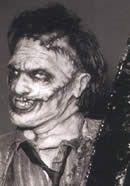Naim Torque
Posted by: Darke Bear on 01 October 2017
This is something to be aware of with any new Loudspeaker purchase or if you have owned a pair for several years.
Following a visit to a Forum member and a strong suggestion that he wanted his system set-up looked at I ventured forth and had a listen. This was a good spec system:
NDS-2x555DR PS, 552 DR - 500 DR (on two Fraim stacks) - Ovator S600.
It all sounded nice but a bit lack-luster, so we proceeded with some set-up changes.
1. Ensure Brawn and Brain stacks are implemented. This was done ahead of my visit by shifting the NDS onto the 552 - 500 stack and evidently met with the delight of the owner.
But it meant the two Fraim heights were not the same which seemed the reason they where not that way to start with. This is not a problem for me, but does seem to cause domestic distress for many, so I suggested a solution was to add spacers to let the power supplies breath. This works wonders in my system but not many want to try it, the owner did so he obtained a new Medium Level - which I like sonically.
2. Insert Spacers. The Brawn power supply stack was bottom to top: 500PS, 552PS, 555DR(A). 555DR(D) all on medium levels.
We left the 500PS on the lower shelf, where I find it works well, and created a space above it by having a empty level, then the 552PS, then the Medim level with 555DR(A) and the 555DR(D) above that as before. The 500PS I've found is the main culprit to be kept away from the other equipment and supplies - it generates the largest and noisiest field.
We had a listen and it was immediately obvious the bass was now more powerful, coherent and open than before. Rather than just 'bass' there were instruments - drums and bass guitar and low synth with their own character. So well worthwhile.
Then we were going to look at the Speakers. They had not been torque-checked since purchase and installation and I knew they would probably be out of spec, but not quite how much it may impact the performance. It should be emphasised you don't just go and blindly 'tighten them up', as you can make them sound far worse if too tight and not all done the same. I had seen my Dealer perform this properly twice before and obtained the correct Torque Driver and Naim torque-settings beforehand.
3. Re-torque the Bass Drivers: These were done to the setting Naim specify. We listened and it was all rather a shock - all Artists were now awake and interested in the performance which by comparison was a bit drowsy before. It also sounded much louder at the same volume setting we used before unchanged.
4. Re-torque the BMR front and back housing bolts: Again to the correct setting, less than that of the Bass drivers. The same result now appeared to the upper-frequencies - far more open, detailed and dynamic. It woke the system up.
5. We then re-built the 'Brain' stack: top to bottom - NDS, empty (tall) space, 500 (on std shelf), empty lower shelf.
We retained the configuration we had before, as this is about optimal as the 500 likes being up from the lowest shelf. We re-tightened all the Fraim and I un-tightened and re-tightened some levels that were far too tight. You can have things too tight and it will sound 'shouty' and brittle and lose detail if things are way too tight; if they are too loose it smears and you lose definition. We made sure that base level was actually level with a spirit-level first.
After the Brawn shelf was re-commissioned we listened again and there was a nice warmth and fullness to the sound as all the extra low-level detail was now being retrieved.
6. We then completed the job and re-built the Brawn stack with different but worthwhile results - more tunefulness and the system sounded far more coherent and happy with itself.
...the aftermath is that I also re-checked my S800 speakers which have not been home-torqued for about 5 years last by my Dealer and they really liked being done with results similar to observed with the S600. Some experiment showed mine likes being a tiny bit lower in torque than specified to get the best results.
Again - this is really a job for your Dealer with the right tools. Do not just tighten things blind. Too tight loses detail and sounds bland, too loose and you lose resolution - there is a correct setting.
My reason for posting this is to realise that set-up matters, things can drift off over time and it is worthwhile every few years getting things properly checked to enjoy what you paid for at its best.
DB.

